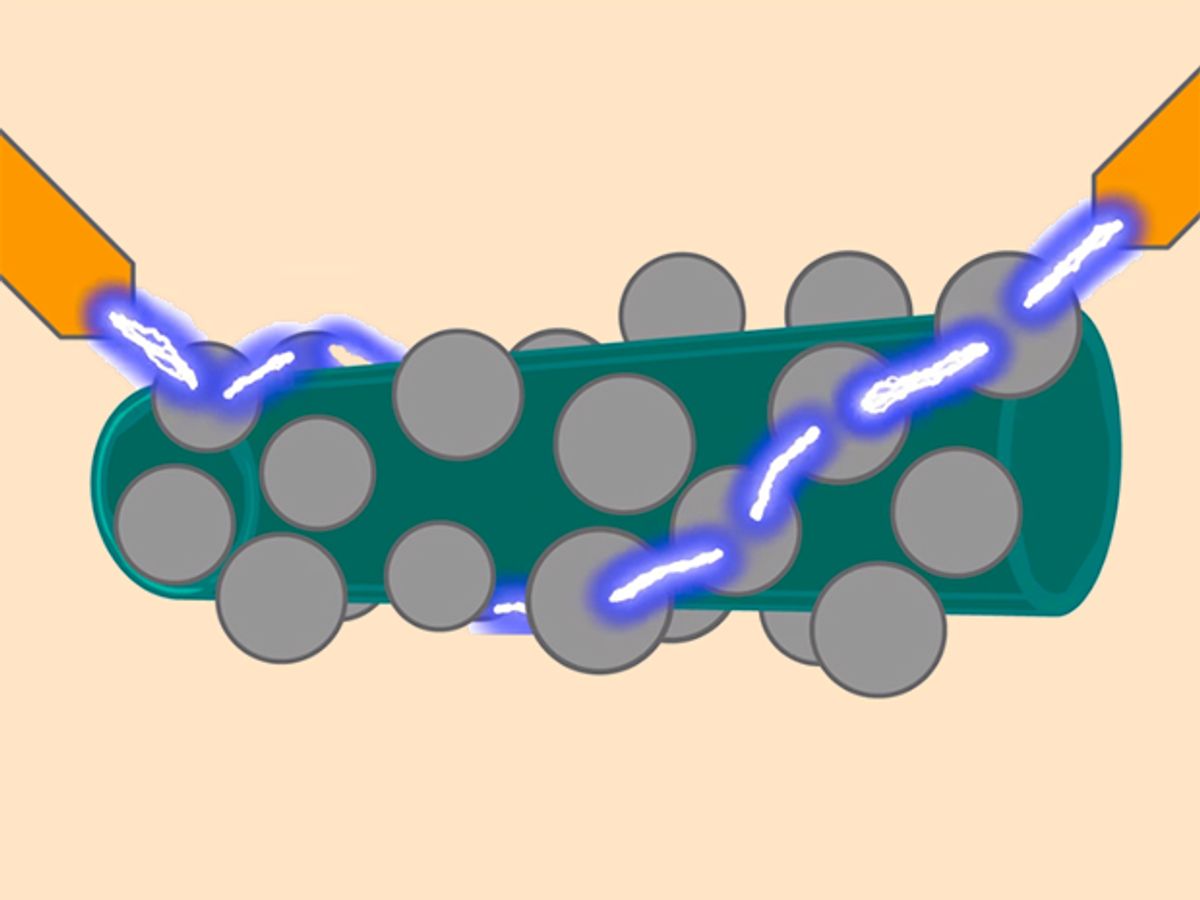Researchers at Michigan Technological University (MTU) have developed a method for producing a tunneling field effect transistor (TFET) that overcomes a key obstacle to their adoption: the need to be operated at cryogenic temperatures. Eliminating semiconductor materials in the design of their nanotube-based TFET has allowed the MTU researchers to fabricate a device that can operate at room temperatures and offers the added feature of flexibility.
In research explained in an article published in the Nature journal Scientific Reports, the MTU researchers, led by Yoke Khin Yap, used iron quantum dots in combination with functionalized boron nitride nanotubes (BNNTs) to create flexible tunneling channels in TFET devices.
In the design, the iron quantum dots are evenly dispersed along the outside of the insulating boron nitride nanotubes, with a small gap between each quantum dot. This gap is enough to prevent the flow of electrons when a small voltage is applied, but when the voltage is increased, the electrons begin to flow, and the on-off capability of the transistor is realized.
“Imagine this as a river, and there’s no bridge; it’s too big to hop over,” said Yap in a press release. “Now, picture having stepping stones across the river—you can cross over, but only when you have enough energy to do so.” In the video below, Yap describes how the design of this TFET operates.
Because the quantum dots are distributed uniformly across the entire surface of the BNNT, the electrons can just jump to the closest quantum dot, with many options to choose from. It is this multiplicity of quantum dots to jump to—offering multiple transmission paths—that enables its capabilities for flexible electronics.
Another key feature of the design is that neither the metallic quantum dots (conductors) nor the insulator BNNTs act as semiconductors. They therefore avoid many of the problems associated with semiconductor materials such as silicon. For instance, silicon-based devices suffer from heating issues caused by current leakage and high resistance. Eliminating these thermal issues makes cryogenic cooling unnecessary.
The potential for TFETs to replace the ubiquitous metal-oxide-semiconductor field-effect transistor (MOSFET) has been appealing for more than a decade. The continuing miniaturization of MOSFETs for the last half-century and the combination of n-channel and p-channel MOSFETs to form complementary metal-oxide semiconductors (CMOS) devices have been the main drivers of the technological developments over that time.
While the miniaturization of MOSFETs has been extremely successful, the unfortunate byproduct of that success has been the growing impact of quantum effects that can negatively affect their performance. Among them is the phenomenon where electrons tunnel right through gates that have become increasingly thinner as MOSFETs get smaller. This problem manifests itself in MOSFET design at the threshold of what is known as the 60 millivolts/decade limit, which represents the minimum amount of voltage required to increase the current flowing across a transistor by a factor of 10.
With TFETs, however, what had been a flaw becomes a feature. While the MOSFET operates by raising or lowering the energy state to turn the flow of electrons on and off, a TFET maintains a high energy state and manages to get the on-off effect by changing the probability that the electrons will materialize on the other side of the gate. This change in probability is brought on by the TFET using the gate to control the electrical thickness of the barrier. With this new transistor design, silicon-based TFET devices have reached limits of 40 mV/decade.
While the press release and the video make reference to the flexible properties of the BNNT channel as a feature, the importance of appealing to wearable electronic applications at this time seems somewhat far off when the potential for either nanotube- or graphene-based TFETs seem more than a decade off into the future. Meanwhile silicon-based TFETs could be commercially available from companies like Toshiba as early as next year.
Dexter Johnson is a contributing editor at IEEE Spectrum, with a focus on nanotechnology.



